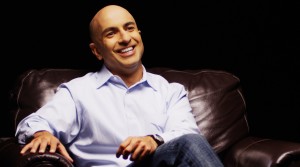 In his third symposium on ending “Too Big to Fail” at the Peterson Institute in Washington, D.C., on Monday, Minneapolis Fed President Neel Kashkari said many current reform efforts are headed in the right direction—but that those measures do not go far enough.
In his third symposium on ending “Too Big to Fail” at the Peterson Institute in Washington, D.C., on Monday, Minneapolis Fed President Neel Kashkari said many current reform efforts are headed in the right direction—but that those measures do not go far enough.
At Monday’s symposium, Kashkari examined the tradeoffs of higher capital standards for banks, noting that increased capital in the form of common equity can make banks stronger, reduce complexity, and reduce pressure on supervisors.
The downsides to increased capital standards need to be explored further, however.
“In particular, higher capital could raise the cost of lending and potentially reduce economic activity,” Kashkari said. “But to what extent? How should we measure such costs? Increased capital standards for large banks have the potential to push risk to non-banks, such as hedge funds and insurance companies. Experts appropriately ask, if we substantially increase (and simplify) capital standards for banks and that drives risky activities elsewhere, has financial stability really improved? This is an important question.”

Neel Kashkari
The first step toward ending Too Big to Fail is “massive structural changes” to large banks and the overall financial system, Kashkari said, noting that some large financial institutions are starting to shed assets in response to increased regulation. “Almost none of the experts we have consulted with believe the industry can and should stay in its current form,” he said. “The only disagreement was about the scale and the speed of that restructuring.”
Kashkari noted that he believes Too Big to Fail still exists among the larger banks, citing as an example the Fed's and FDIC's joint rejection in mid-April of the “living wills” (plans for how the banks will enter bankruptcy without disrupting the financial system) of JPMorgan Chase, Wells Fargo, Bank of America, BNY Mellon, and State Street.
“There was also a shared concern that as memories of the crisis fade, the will to complete the implementation of current reforms (let alone introduce new ones) weakens,” Kashkari said. “This outcome leaves the financial system exposed to unacceptable risks if reforms are left incomplete. Indeed, this is part of the motivation for our ending TBTF initiative: to trigger a serious national conversation about the risks posed by large banks while we still remember how painful the crisis was for society.”
One of the steps Kashkari said must be taken even with a safer banking system is taking action to prevent risk from moving from one part of the financial system to another—to reduce risk and not simply move it around.
“The issue of risk-shifting from the commercial banking sector to the shadow banking system is particularly acute in the United States,” Kashkari said. “According to the Financial Stability Board, the United States has the largest shadow banking sector, with $14.2 trillion in 2014, representing more than a third of global shadow banking assets reported by 26 developed and emerging countries across the globe.”
Kashkari said that while many in the industry hold to the idea that “Too Big to Fail” can be ended by imposing losses on long-term debt holders of large banks during a stressed economic environment, he said he does not believe this approach will work because it has too many moving parts and is too complex, it leans too heavily on supervisory wisdom, and it defies market logic.
The Minneapolis Fed's plan for ending Too Big to Fail will be released before the end of the year, Kashkari said.
Click here to read Kashkari’s complete speech.

 theMReport.com Your trusted source for mortgage banking news
theMReport.com Your trusted source for mortgage banking news









